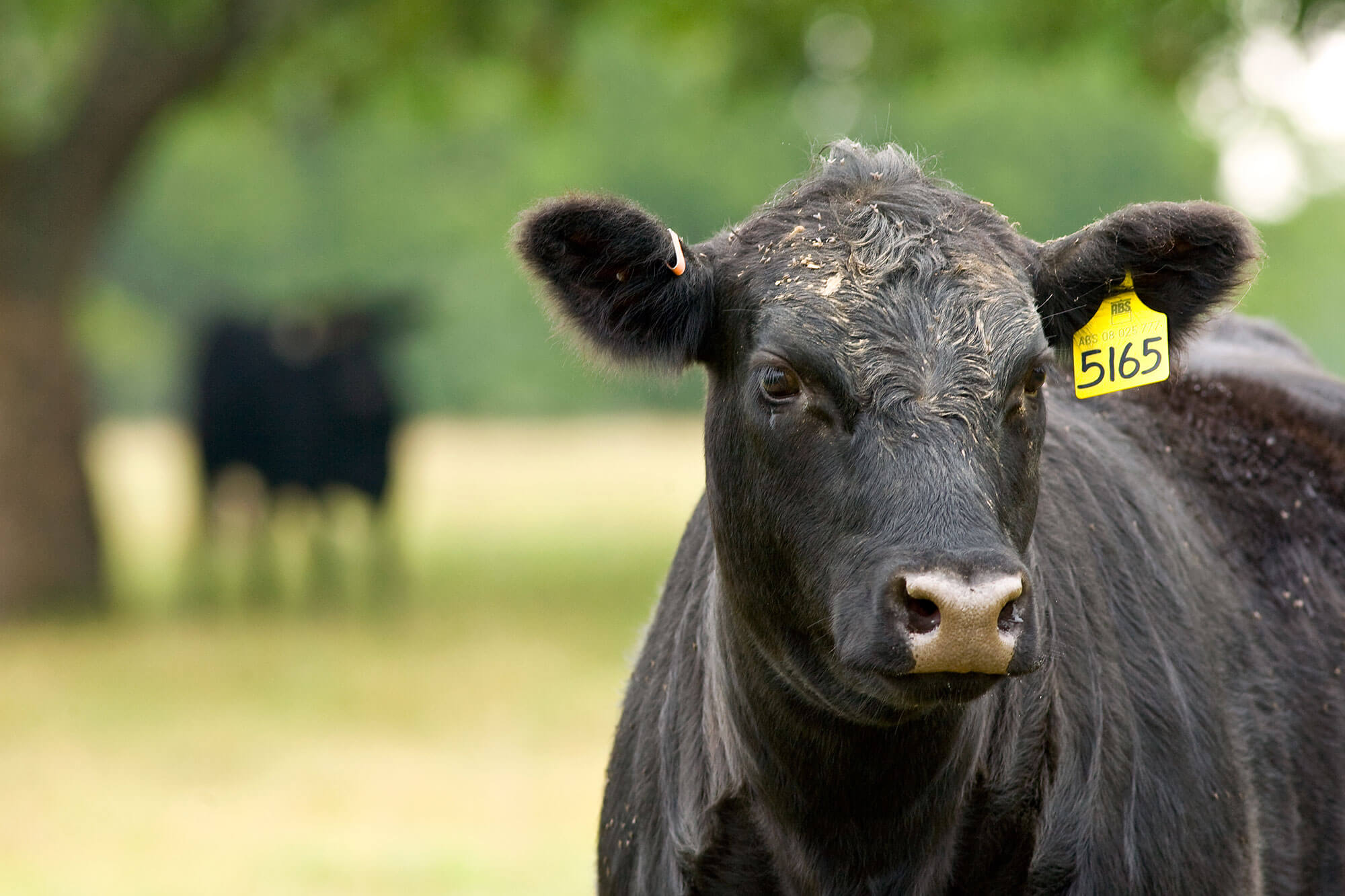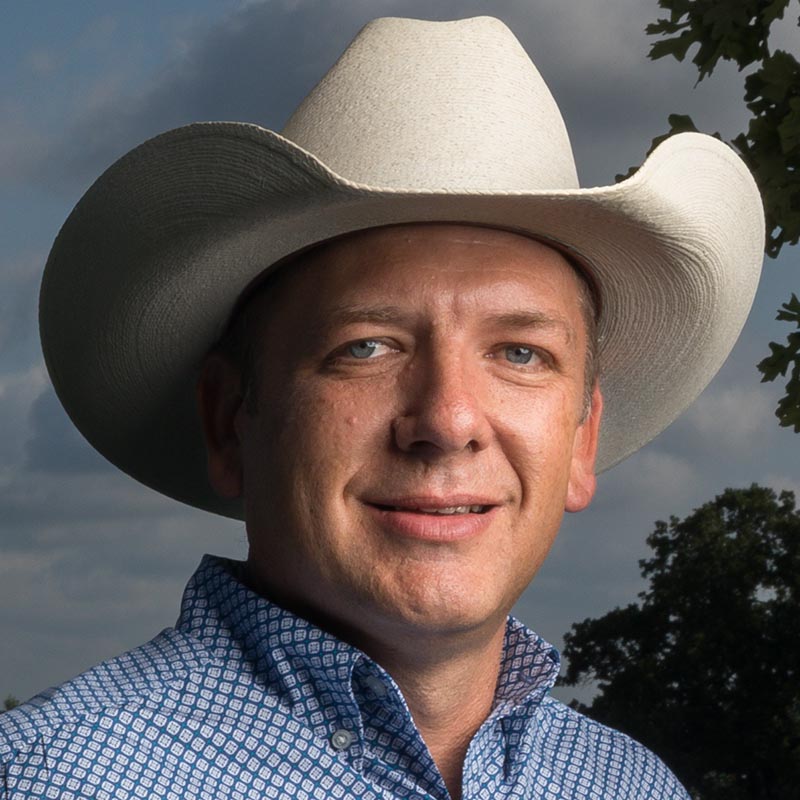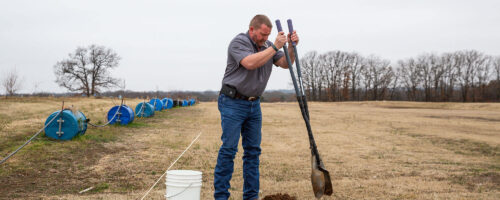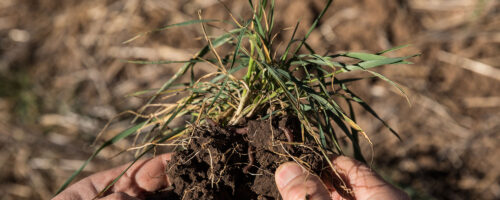Top 5 Essentials of Heifer Development
It is important to properly develop heifers before the breeding season and to continue managing them during and after the calving season.
Heifer development should be considered one of the easiest management components of your cow-calf herd. You’re not pushing her for gain, she is not nursing a calf yet, she doesn’t tear up fences and equipment like a herd bull, and you’re just coasting her to a target breeding weight. However, heifer development is often one of the more challenging components in any given year.
If you’re breeding a replacement heifer to calve as a 2-year old, there will be two years of development cost before she produces a calf to market. And in most cases, calves out of first-calf females do not bring as much as the herd average due to weaning weight difference. In addition, the most stressful time in a replacement heifer’s life is delivering her first calf and her first lactation period, so there are sometimes challenges getting her rebred and keeping her in the herd.
Heifer development is not that complicated as long as you plan for it. Manage heifers separately from the herd, and separate pasture resources as well as additional hay and feed resources.
So not only is properly developing heifers before the breeding season important, managing them after their first breeding season is just as critical. Here are five essential factors to think about when considering developing heifers for your operation.
1. Develop a plan.
This may sound simple, but developing a plan will help you understand what all goes into developing and breeding heifers, including the associated costs. Developing a plan will force you to think about how many heifers you plan to develop, what facility and feed resources you have and need ahead of time, your limitations, and how much you are willing to put into it. Structure your plan into different phases: development, breeding and calving.

In the development phase:
- Determine how many heifers you plan to develop.
- Have in mind how you plan to develop them. Inventory your feed resources (pasture, hay, supplementation and minerals) and develop a diet based on targeted average daily gain for a specific number of days.
- Monitor heifer development and have culling criteria (such as body weight or gain) established to ensure heifers are on track for breeding.
In the breeding phase:
- Determine when your breeding season starts and how long it will last.
- Make plans to pull the bull(s) and manage them separately.
- Are you only using natural service? If so, do you have enough calving-ease bulls to target one bull per 25 heifers (on average and depending on age of bull)?
- Will you use estrous synchronization and artificial insemination (AI)? If so, do you have all the supplies ordered and an AI technician lined up?
In the calving phase:
- Determine whether you have enough forage and supplement resources (forage quality is critical) or if you need to purchase them prior to and following calving.
- Identify a calving pasture separate from the mature cow herd.Make sure you have the proper equipment to assist heifers calving and shelter for heifers that have been stressed from calving assistance.
2. Hire the right female.
Not every heifer will make a good replacement heifer. Some say the best replacement heifer is one that gets bred early in the breeding season and delivers and mothers a healthy calf, regardless of what that heifer looks like. We can still use phenotype and genetic pedigree as a selection tool, as long as it is not the first selection criteria.
The female you want to hire is a bred heifer that conceives early in the breeding season. However, to get there we need to make some decisions early on in the hiring process. You need a pool of candidates to start with based on your job description. Your job description should lay out minimum requirements that the heifer needs to meet before you choose her to go through the development process. These requirements should include:
- No freemartins (infertile female born with a twin male)
- Minimum body weight
- Minimum age
- Structural soundness
- Not out of terminal sires
- Any additional requirements you may have
Throughout the development process, you should have checkpoints in place to monitor the performance of your heifers. For example, bodyweight throughout the development process and pelvic area prior to breeding.
Finally, after the breeding season, she needs to be pregnant, preferably early in the breeding season. Then, and only then, should you hire her for the job of a herd cow.
3. Stay on track for breeding.
Regardless of her pedigree or looks, she needs to go into the breeding season cycling to increase her chances of conceiving early during a defined breeding season.
There are three factors that affect timing of puberty: breed, age and body weight.
In low percentage Bos indicus heifers, puberty will typically occur from 12 to 14 months of age. Regardless of breed, heifers should weigh close to 65 percent of expected mature body weight at breeding. Reproductive tract scores can be used to determine the puberty status prior to breeding; however, finding someone experienced and available to conduct the exams can be a challenge.
If the heifer is old enough, body weight is the key factor to determine if that heifer is on track for breeding. However, you need to have the capabilities of weighing the heifers to determine if they are on track or not.
Some studies have been successful at developing heifers that weigh less than 65 percent of mature body weight at breeding (55 to 58 percent) but only for a natural service breeding program. If estrous synchronization is used in conjunction with artificial insemination (AI) at a predetermined time, heifers that reach 65 percent or more of their target body weight at breeding are likely to have a higher conception rate and remain in the herd longer.
4. Breed early and calve early so she can stay longer.
Research is limited, but studies show a strong correlation between heifers conceiving early in the first breeding season and remaining in the herd longer (raising a calf every year).
It is hard to swallow the idea of leaving the bull out with your replacement heifers for only 30 days. If that is unrealistic, you can still maintain a 45-day, 60-day or longer breeding season if you have the capabilities of determining which heifer conceived in the first 30 days. You would then have the opportunity to add value and market heifers that conceived in the second half of the breeding season as bred heifers.
The little research out there tells us that conception in the very beginning of the breeding season is impacted by target breeding weight. Heifers that reach 65 percent or more of their expected mature body weight by the start of the breeding season are more likely to get bred early (particularly when estrous synchronization and AI are used) in the breeding season and remain in the herd longer.
5. Manage for her future.
In an article I wrote on heifer development in the March 2018 issue of Noble News and Views, I talked about factors during heifer development that could affect their ability to stay in the herd. Let’s take that a step further and discuss managing that heifer after delivering her first calf.
Managing a first-calf female for her second breeding season can be more challenging than developing a replacement heifer. If the heifer is not in adequate body condition when she delivers her first calf, it will be difficult for her to resume estrus prior to her second breeding season. Nutrient requirements are much higher for these lactating heifers because they require nutrients not only for maintenance and lactation but for growth. Thus, it is critical that a heifer calves in a body condition score of 6 at least two weeks prior to the rest of the cow herd so she has the same opportunity to conceive early in her second breeding season like she did in her first breeding season.



Comment